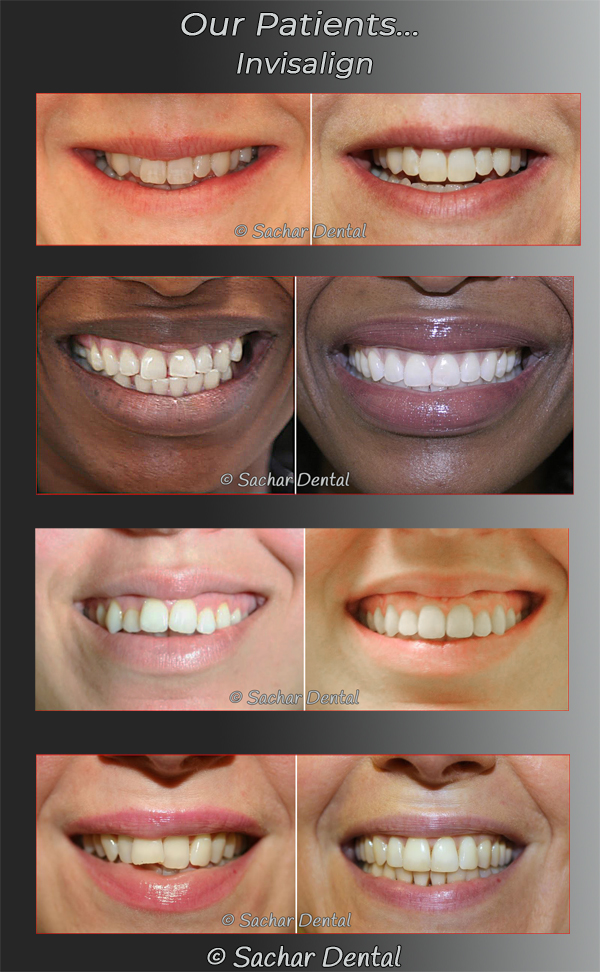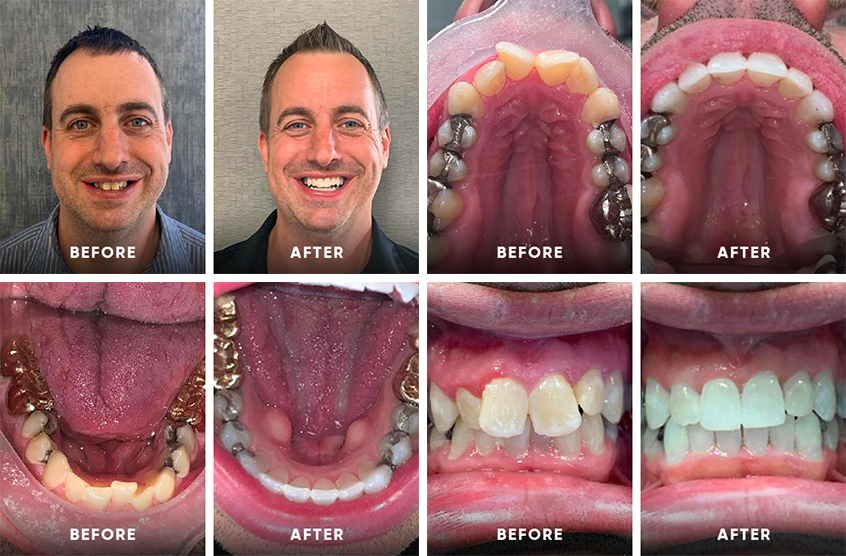The Ultimate Contrast: Invisalign vs. Traditional Braces for Grownups
The Ultimate Contrast: Invisalign vs. Traditional Braces for Grownups
Blog Article
Invisalign vs. Conventional Dental braces: Which Alternative Is Right for You?
When thinking about orthodontic therapy, the selection in between Invisalign and traditional braces provides numerous important elements that merit mindful examination. Invisalign supplies a very discreet alternative with removable aligners, while conventional dental braces offer a much more noticeable yet reliable remedy for extreme misalignment. Each option includes distinctive advantages and downsides connected to aesthetics, comfort, treatment period, and expense. Recognizing these subtleties is critical for making an educated choice that aligns with your personal preferences and lifestyle. The inquiry continues to be: which alternative will ideal fulfill your orthodontic demands and assumptions?
Introduction of Therapy Choices

In contrast, typical braces are composed of metal braces and wires that are bound to the teeth. This approach applies continual pressure in time to attain alignment. While efficient for intricate orthodontic problems, traditional braces call for regular visits for modifications and can posture challenges in preserving dental health due to the problem of cleansing about cords and braces.
Both choices have their benefits, and the selection typically hinges on details dental conditions, way of life preferences, and person compliance. Inevitably, getting in touch with an orthodontic specialist is critical for figuring out the most appropriate treatment strategy customized to individual needs. Comprehending the nuances of each alternative can significantly influence the overall success of orthodontic therapy.
Aesthetic Factors To Consider
A substantial variable affecting the selection in between Invisalign and traditional dental braces is the visual charm each therapy supplies. Invisalign aligners are crafted from clear plastic, making them basically invisible when put on. This very discreet look is specifically interesting grownups and teens who might really feel awkward regarding their orthodontic treatment. The ability to maintain an all-natural smile throughout the placement procedure can dramatically boost the individual's confidence in social and professional setups.
In contrast, traditional braces include steel brackets and cords, which can be a lot more visible. While advancements in orthodontic modern technology have brought about the advancement of smaller braces and tinted elastics, typical braces still maintain a more obvious account. For some people, the visibility of braces might deter them from looking for required treatment.
Inevitably, the option in between Invisalign and standard dental braces may rest on individual preferences regarding aesthetic appeals. Patients who focus on discretion commonly lean towards Invisalign, while those who are much less worried regarding presence might select conventional dental braces. Understanding the visual effects of each option is vital for making an informed decision that aligns with one's way of life and choices.
Comfort and Convenience

In terms of benefit, Invisalign aligners are removable, enabling patients to appreciate their preferred foods without limitation and maintain optimum oral hygiene. Cleaning and flossing are streamlined, as the aligners can be gotten during these regimens, whereas standard braces need cautious maneuvering around braces and cables.
In addition, Invisalign's modern system enables fewer orthodontic gos to. Patients normally get multiple collections of aligners at when, which can improve the therapy procedure and reduce time invested in the orthodontist's chair. In contrast, traditional dental braces require routine adjustments, making them much less convenient for those with hectic schedules. Invisalign. On the whole, the comfort and ease of Invisalign make it an appealing selection for numerous people seeking orthodontic therapy.
Therapy Duration and Performance
While both Invisalign and conventional dental braces are effective in remedying oral misalignments, the duration of therapy can differ substantially between the 2 alternatives. Usually, Invisalign therapy can take anywhere from 12 to 18 months, depending on the complexity of the situation. The clear aligners function by gradually shifting teeth right into their wanted placements, and regular follow-ups with an orthodontist assistance make certain progress remains on the right track.
On the other hand, typical dental braces often need a longer dedication, normally varying from 18 months to 3 years. This results from their set nature and using brackets and cords, which can basics be extra efficient for complex anchor situations and severe misalignments (Invisalign). The therapy effectiveness of typical dental braces is well-documented, as they permit for exact adjustments and greater control over tooth activity
Inevitably, the selection between Invisalign and conventional dental braces might depend upon both the expected treatment duration and the specific dental concerns available. Consulting with an orthodontist is essential, as they can supply customized suggestions based upon private requirements, making sure the picked approach aligns with desired end results and durations.
Expense Comparison and Insurance Options
Price plays a considerable function in the decision-making procedure for individuals taking into consideration orthodontic treatment, whether opting for Invisalign or conventional dental braces. Typically, the price of Invisalign ranges from $3,000 to $8,000, while typical braces typically set you back between $2,000 and $6,000. Factors affecting these costs consist of the intricacy of the instance, the duration of treatment, and geographical place.
Numerous dental insurance coverage strategies supply partial insurance coverage for orthodontic treatments, yet the specifics can differ extensively. Generally, conventional braces might be extra frequently covered by insurance coverage strategies contrasted to Invisalign, which some insurance companies classify as a cosmetic treatment.
Additionally, several orthodontic techniques provide flexible layaway plan, making both therapy options extra accessible. Individuals must ask about potential funding choices and discount rates for upfront payments. Evaluating the total expense, including insurance policy advantages and layaway plan, is important for making an informed decision that lines up with both visual preferences and spending plan considerations.

Verdict
In summary, the option between Invisalign and typical braces rests on numerous elements, consisting of visual choices, comfort, therapy period, and price. Invisalign supplies a discreet, removable choice that helps with oral hygiene and nutritional versatility, while conventional braces might be preferable for complicated oral problems and frequently come with a lower cost factor. Ultimately, consultation with an orthodontist is necessary to evaluate private conditions and establish one of the most appropriate treatment alternative for attaining optimum dental alignment.
When considering orthodontic treatment, the option in look at these guys between Invisalign and traditional braces presents several vital factors that merit mindful analysis.Contrasting Invisalign and standard dental braces exposes distinct treatment choices for orthodontic adjustment.While both Invisalign and typical dental braces are efficient in fixing oral imbalances, the period of therapy can differ substantially in between the 2 options.Expense plays a considerable duty in the decision-making procedure for individuals considering orthodontic treatment, whether choosing for Invisalign or typical dental braces.In summary, the selection between Invisalign and standard braces hinges on multiple variables, consisting of visual preferences, comfort, treatment period, and cost.
Report this page